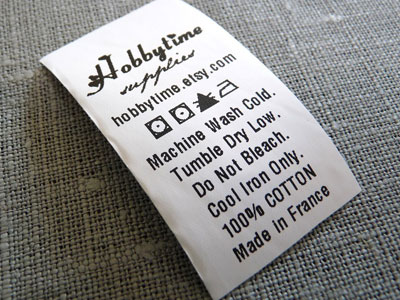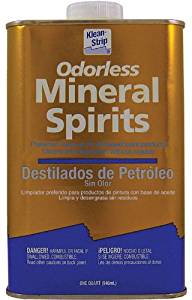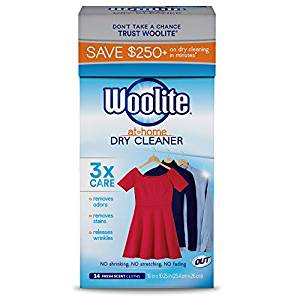- No Obligations
- Stop Paying Too Much For Your Contractor
- No Spam Calling
- Screened & ID Checked Contractors only!
The Most Effective Stain Removal Solutions
0
 The Most Effective Stain Removal Solutions
earlyexperts.net
The Most Effective Stain Removal Solutions
earlyexperts.net
You’re chewing a delicious hotdog one moment, and the next it’s squirting ketchup, mustard and fat onto your clean white shirt.
You reach into your pocket ready to take out a pen to sign an important contract, and your fingers find a sticky inky mess that has seeped through your clothes.
That kick about in the park turning into something more serious as you make a sliding tackle, leaving your new slacks smeared in grass stains.
I suppose it’s all part of life, and we’ve come to accept that 21st-Century living comes with a bit of dirt thrown in for good measure. But, how do we tackle these and other everyday stains so they won’t ruin our clothes forever?
The cleaning gurus will tell you that if you want to get to grips with strained clothes, then they have to be tackled as quickly as possible. The term they use is that you have to prevent the stain setting, in other words, allowing the stain to chemically bond with the fabric. If this chemical bond occurs, the stain has effectively become permanent. If this is the case, then it may mean the item has to be scrubbed until the stained fibers are removed, leaving those that have not been penetrated by the stain visible. Whatever the stain, there are some basic rules you can follow to prevent setting and aid stain removal.
Wash the stain with water. Whatever the stain, it’s best to try and dilute it with water as quickly as possible. For some specific stains, a solvent will be needed. If you do not have access to the solvent particular to that stain, then water will do as a first response.
Avoid heat. Any form of heat is your worst enemy when dealing with stain removal. Heat will generally accelerate the setting of the stain into the fabric. Don’t try to dry out the material as it forces the stain to set quicker. Also, when cleaning use only lukewarm water or solvent.
Avoid pressure. Try not to force any cleaning agents into the fabric. Let the solvent slowly soak into the material rather than scrubbing.
Knowing your fabric
Unfortunately, water is often not enough to get rid of many of today’s everyday stains. However, there are usually lots of cleaning products around the home that can do the job, as well as some ingredients that can work wonders. Firstly, we have to select the right solvent for the fabric, and then apply it in the correct manner.
All the clothes we buy come with a care label these days, giving graphical instructions on what products can, and can’t be used in their care. If you are unsure, then it is best to go with the type of fabric that has been stained. If you are uncertain about the cleaning method, and how well the material will react, always try it out on a small patch of inconspicuous fabric for attempting to clean the stain.

Cotton: The best solvents for treating cotton are the detergents we use around the home and light acids such as vinegar or lemon juice. Cotton items can be soaked for a period to allow any solvents to penetrate the fabric. Be careful not to dry the fabric with heat before the stain is completely removed as this will set the stain. In severe cases, white cotton can be bleached, but that may harm the fabric, so it should be used as a last resort.
Wool: Is much less forgiving than cotton, as it is more sensitive to heat and needs gentle treatment. If you get a stain on a woolen fabric, it can be soaked like cotton but must be dried flat to prevent shrinking and distorting. Only special wool-safe detergents should be used and in lukewarm not hot water. Steer well clear of bleaches or any other acid-based treatment methods.
Synthetics: One has to be very careful with synthetic fabrics, as they can not all be treated the same. Polyester and rayon can take much harder scrubbing than say cotton. However, they can be totally destroyed by some bleaches. The best solvent for cleaning synthetics is a regular laundry detergent or hand soap for stains that contain a lot of greases.
Silk: One of the more difficult materials to clean. It is best to treat stains on silk with water. But once the stain is removed, wash the whole item. Otherwise you may get unsightly water spots that can be as ugly as the stain you removed. If the stain needs something stronger try a glycerin stain remover which is neutral on the fabric.
Knowing your solvent
When it comes to cleaning fabrics, there are lots of things you can use to get rid of a stain easily. Here is a selection of the most popular solvents.
Water: It’s the safest, and cheapest way to clean stains. It’s universally available and is safe to use on all the fabrics we use in our day-to-day lives. Unfortunately, it’s rarely 100 percent effective when used on its own. Prolonged soaking will get rid of some stains, but it is best used in conjunction with a detergent or acid.
Salt: Another cheap and universally available item that can be found in every home. Applied on the wet surface of the fabric, it gives the chemicals within a stain something to hold onto. Even with cold water, salt can be useful in tackling sweat, red wine, and blood stains.
Acids, Vinegar and Lemon Juice: The mild acidity of vinegar and lemon juice are great at getting rid of the tannins left by coffee and tea stains. They are also good at tackling grass stains and the residue you get from glues. If you allow your laundry to sit around wet for too long, it can develop a nasty mildew odor. Add vinegar to the next wash and the smell will go away and the freshness return.
Detergent: The detergent we use for our dishes, and for the laundry are very much the same and can be virtually interchangeable. The detergent we use for the washing up is generally a little harsher so should not be used on delicate fabrics. These detergents, particularly those with enzymes are very effective against grease-based stains, and those that come from fatty foods such as hamburgers, or gravy.
Bleaches: These oxidizing agents are great at removing stains that contain color, such as makeup and grass stains. The most common oxidizing bleach is hydrogen peroxide. However, these bleaches can damage delicate fabrics and are less effective against greases. If you are unsure how the bleach will react, it is best to first dilute it before applying to a test part of the fabric.
Glycerin: Often described as neutral, glycerin draws stains from the fabric, so is good for removing ink and dye stains. Most of the commercial ‘stain sticks’ contain glycerin combined with detergent.
Mineral Spirits: Sometimes known as White Spirit, this a tough solvent for heavy grease-based stains such as tar and heavy oils. It is far too strong for delicate fabrics. Once the stain has been removed, the clothing should be laundered, and air dried in the normal way.

Enzyme/Digestant Detergents: These types of detergents are sold as being effective against organic stains and odors such as egg, blood, sweat, and urine. They should not be used on wool or silk and the cleaner works by feeding on the proteins found in the organic stains. Wool and silk are also organic materials so can be destroyed if exposed to these enzyme cleaners.

Dry Cleaning Solvents: Although these cleaning products can be bought for home use, they are difficult to manage, and care must be taken when using them. It is probably simpler just to have a professional cleaner do the job rather than trying a DIY approach at home.

Chlorine Bleach: It’s the last gasp route for getting rid of a stain. When everything else has failed, then a chlorine bleach may do the trick. This a very astringent cleaner and can damage fabric and will probably affect any colored material. Check the tag on the garment or material and if it says ‘No Bleach’ or ‘Chlorine Free’ do not attempt to clean it with the agent.
Don’t worry if you can’t get out all of the stains with one application. You might have to try more than once, and wash between treatments before the stain is completely removed.
Using the right product in the right way
Knowing what has caused the stain, the material, and the right solvent to clean it is one thing. Applying it correctly is another. If a cleaning agent is applied wrongly, then it can have devastating effects, making the stain worse, or even destroying the garment completely.
Allowing the solvents time to do their work on the stain is probably one of the hardest things. It’s so easy to think that applying a force and rubbing and scrubbing will get the job done quicker, but you’d be wrong. Be gentle with the fabric. If you get a stain on a garment, best to soak it in water immediately, without taking it off.
✓ Use a bit of tissue paper to dab tap water onto the stain, soaking the whole area right through the fabric. Once it becomes time to remove the garment, re-soak it with water, and apply an absorbent like salt. You can also use cornstarch or talcum powder. This method works best on close woven fabrics such as cotton.
✓ Allow the absorbent material to sit on the stain for a quarter of an hour before removing it, and to rinse the garment with clean water. If you are using a solvent to clean the fabric, apply it to the back of the garment, so it is underneath the stain. The idea is to soak the garment and drive the stain to the surface of the material not deeper into it. This is also a security measure, and should the solvent prove harmful to the material and discolor the fabric, it will be on the inside of the garment out of sight.
✓ Once it has been properly soaked in the solvent, place the garment on a clean paper towel and allow the wick action to draw the stain from the material. If you don’t give the stain somewhere else to go, then it will just dissipate within the material and become so diluted to be invisible. Leave it on the paper towel for about an hour, making sure it does not dry out. When it is still damp, give the garment a final rinse in clean lukewarm water. If it can be laundered straight away all the better.
Common stains and how to get rid of them
Grass:
Use a detergent or stain treatment on the grass stain, and gently rub the fabric together. Allow a few minutes for the detergent to penetrate the stain, and then wash the item normally. If there is any remaining grass color on the garment, apply diluted white vinegar.
You might want to check to see if the garment is color fast by taking a cotton bud and rubbing a little of the vinegar on an inconspicuous area. If no color comes off on the cotton bud, then it is safe to proceed with the stain.
Red wine:
As soon as the wine is spilled cover it with a handful of salt. The salt should absorb the wine, and turn pink. Allow the fabric to soak in cold water with an added enzyme detergent, overnight if possible. If it on a garment launder.
Chocolate:
Make sure there is no solid chocolate left on the garment. Apply a stain remover, and gently rub it into the fibers of the material with an old soft toothbrush. Additionally, you can rub the fabric together to get the stain remover well embedded in the material. Leave the garment for about ten minutes to give the remover time to work. Then put it in the washing machine on the hottest cycle the garment care instructions allow.
Cooking oil, butter & fats:
Place in lukewarm water as quickly as possible, adding detergent, and using a spray or glycerin stick treatment over the affected area. Remove from the water and dab the stain gently with detergent. Place it on a paper towel to allow the wick action to draw the stain from the material. If the stain persists, repeat the operation with a gentle bleach or a dry cleaning solvent. Launder immediately afterwards.
Coffee:
Don’t let the coffee dry out, so soak the affected area with lukewarm water immediately. Dab the stain gently with diluted vinegar or a detergent. Drop the garment in the washing machine on the hottest cycle recommended for the fabric. You might have to do this a couple of times. Whatever you do, don’t use soap powder, or kitchen soap on the stain or it may set it permanently.
Engine oil/grease:
As soon as possible treat with warm water by soaking the garment with a heavy-duty detergent. After it has soaked for a while, treat the affected directly with the detergent, and place face down on paper towels. Allow the stain to come out, but do not allow the fabric to dry completely. Then launder separately. This might have to be repeated a few times to completely remove the stain.
Blood:
Soak the affected area in cold water, and rub the area affected. The water should turn a pink color as the blood comes out of the clothing. Rinse the area, and then blot with a paper towel, before repeating the process. Soak with an enzyme stain remover for about a quarter of an hour, before laundering separately.
Ink:
Soak the stain with hairspray until the area affected is saturated. Use an absorbent paper towel under the stain to soak up the ink. Blot the stain with another paper towel. Repeat the process until all the ink is removed, and then wash with an enzyme detergent.
Ketchup & tomato sauce:
Rinse with cold water as soon as the garment is stained. Use liquid detergent, such as dishwashing soap, on the stain. Dab it with a paper towel. Rinse from the reverse side of the material in an effort not to draw the stain further into the fabric. Repeat until the stain has been removed, and then the garment is ready to go into the washing machine.
Perspiration:
Sweat stains and those around a collar are best treated directly with a stain remover or salt, which is allowed to sit for a little while on the fabric. Wash the item at the hottest temperature recommended for the garment using an enzyme detergent.











